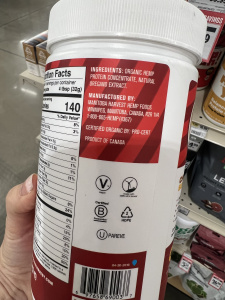Protein Powder: A Dietitian's Review

The most common question we get asked is which protein powder we recommend for a specific health condition, patient, adolescent or sport. The answer is almost always followed up by many of our own questions to individually assess the situation, but here are a few of our thoughts on protein powder. Consider it food for thought as you navigate your own personal health and wellness journey.
The evolution of protein powder
In the 1950s, protein powder first appeared on the market primarily for bodybuilders and athletes. The earliest commercially available protein powders were derived from egg protein and soy, with egg protein (albumin) gaining popularity due to its high biological value and complete amino acid profile. These powders were rudimentary by today’s standards—often gritty, hard to mix, and lacking in flavor. As the fitness culture expanded in the 1970s and 1980s, dairy-based proteins, particularly whey and casein from milk, became dominant because they were more effective at promoting muscle recovery and had better taste and solubility. In the 1990s and 2000s, the market exploded with innovations, including plant-based options like pea, rice, and hemp proteins to cater to vegan and allergen-sensitive consumers. The evolution of protein powder reflects changing nutritional science, increased demand for convenience, and broader consumer interest in fitness, health, and specialized diets.
Choosing a protein powder for you
Before you purchase powders to fill a suspected nutrition gap, start by calculating your daily protein requirements based on your body weight, activity level, and fitness goals and evaluate your current diet to see if you're consistently meeting those needs through regular meals. You can do this with a helpful tracking app and logging your daily meals and snacks for about 3 days or by using pen and paper and reading nutrition facts labels on everything you consume for three days. You should also consider convenience and digestion—if you're often on-the-go or struggle to prepare or digest whole protein sources, a high-quality protein powder can be a practical alternative. If you don't know what whole protein sources mean or which proteins you can digest in an allergy situation, consult with your allergist and Registered Dietitian.
Which protein powders are most effective at building muscle?
If you have a chronic disease that impacts how you build muscle such as muscular dystrophy or in the case of connectivity tissue disorders like Ehlers- Danlos syndrome, the disease process must be considered before selected a protein source. In both of these instances, no dietary protein source will correct for the disorder itself. However, preserving functional fitness is often a shared goal. For this reason, a possible preference for readily available, economical and easy to prepare protein sources might take precedence over others such as:
-
Whey protein – Highly bioavailable and quickly absorbed, ideal for muscle maintenance
-
Eggs – Contain all essential amino acids and are easy to digest
-
Fish and poultry – Lean and rich in high-quality protein
-
Plant-based proteins (like soy, pea, or rice protein) – Good alternatives for those with dairy intolerance, though combining sources may be needed for complete amino acid profiles
We vet products based upon third-party testing, taste, and cost at North Texas Nutrition Associates and often can provide several protein options to patients who need to stay in a budget and consider multiple medical issues and preparation preferences.

 RSS Feed
RSS Feed